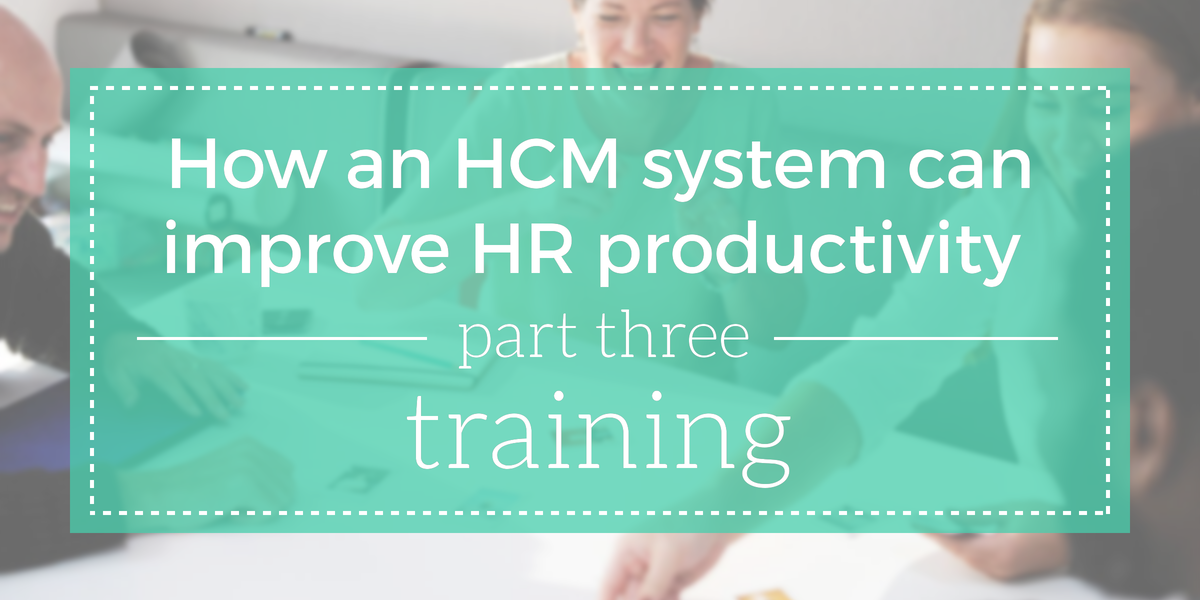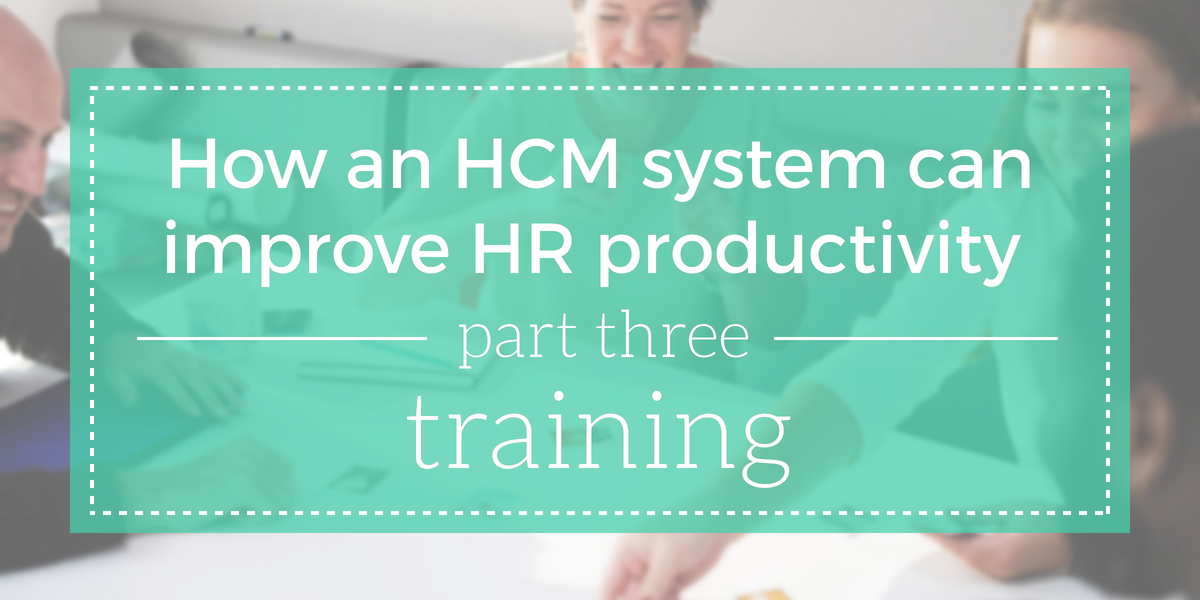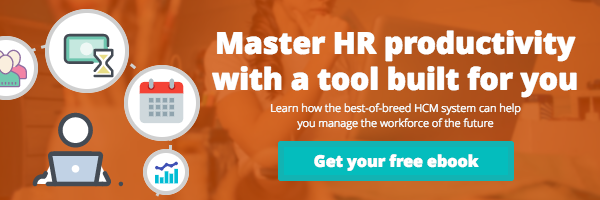
Read part 2: How an HCM system can improve HR productivity, part two: Onboarding
So you’ve onboarded the best and the brightest. Now what? Your job as an HR leader is not over. A great manager helps employees shape the future direction of their careers.
Yet, some managers neglect sustainable training and development practices. As a result, organizations pay the high price of losing top talent. When you’re short-staffed or overtasked, the burden seems all too real. HR managers face the pressure to take care of essential day-to-day operations, and are often left without time to carve out a long-term plan.
With a lot at stake for effective training and development, HR leaders bear the responsibility of laying the foundation for employee success. But training doesn’t have to be elaborate; it’s a matter of assessing employee skills and needs and guiding them to fill in the gaps throughout their career. If it’s done well, the payoff can be substantial for management and teams alike.
Moving away from a one-size-fits all approach to training is easier said than done. But with the right tools and knowledge, the solution is closer than you think. Let’s take a look at how you can configure individualization for an entire organization in an HCM system.
Manage on-the-job training
Here’s the best place to start when designing training plans: figure out where your employees are, and where you want them to be. Assess the strengths and weaknesses of your employees, and determine what skills and trainings are necessary to reach those goals. With an HCM system, you can track skills and certifications with customizable reports. Stay ahead of the game by scheduling courses, tracking certifications, and reporting results to ensure future managers will be well-versed in the development of each hire. Avoid overloading the employee with books of information or leaving them hanging with nothing more than a to-do list.
A confused or overwhelmed employee halts the efficiency and productivity of an entire team. Even more, it makes them feel unwelcome or treated like an afterthought. Without providing clarity or proper training efforts, employee potential and talent may slip through the cracks. The motivation and excitement they carried into the job loses momentum if employees are left unengaged. Provide on-the-job training in a manageable flow, so employees grow their competency from a solid foundation. Automated workflows will be your best ally to manage various time-consuming tasks.
Poor learning management leaves employees feeling aimless. Before you know it, these bad habits cause high turnover, low productivity rates, and a damaged company reputation. While managing and leading go hand in hand, the practice is lost upon managers overburdened with a dozen responsibilities. By distributing power among management and employees, you empower employees with learning opportunities that promote career growth and ambition. Building checklists for projects are a great way to guide employees and track their progress. Use check-ins on an HR platform to drive accountability without resorting to micromanagement. By giving your employees the chance to own their work and accomplishments, managers reap the benefits of saving time and money.
Measure performance and productivity
Organizations depend heavily on HR to build value and develop talent. The process of managing employee performance includes defining goals and encouraging continued learning. You may discover after several rounds of training that the process changes and refines. Until you exchange an ongoing, honest, and constructive dialogue, training can only go so far. But don’t bite off more than you can chew. Shuffling paperwork and coordinating assessments from different departments is onerous and time-consuming. Make it easy for yourself with HCM system tools. Start by creating role-specific appraisal forms, defining cascading goals, and automating the performance review cycle. Keep yourself on target by setting up alerts and reminders to track assessments, feedback, approvals. Paper forms will become a thing of the past when you can organize and dispatch evaluations on a digital HCM database.
Measuring how well an employee adjusts to a role allows you to anticipate performance issues and improve processes without running the risk of costly mistakes. According to Kronos, fifty-five percent of organizations don’t measure the effectiveness of their onboarding and training programs. The ones that do report stronger talent and business outcomes. Taking the time to understand how well your processes work will allow you to uncover insights and reap positive results.
When it comes to measuring productivity, consider the time to proficiency. How long does it take for a new hire to become productive? It’s worth evaluating employees’ knowledge of procedures and processes to get a better understanding of how to train them effectively. You can access data and create custom reports by pulling information from an integrated database. With a little preparation and investment in the right tools, the company will benefit from a league of superstars.
Find the right solution to train great talent
Committing to these best practices in your training process will push talent forward in your organization, rather than steering them out the door. If you are thoughtful and methodical about creating a positive experience from start to finish, your workforce will prosper in the years to come. While there may be a lot of moving parts, the technological solutions offered by an HCM system can alleviate the burden of training. An all-in-one cloud-based software offers everything in one place, so your workflows run together. With the Fuse Workforce HCM platform , the days of siloed systems are over. By using Fuse’s powerful, multi-faceted platform, you’ll empower your workforce and build a thriving productive future.
Read part 4: How an HCM system can improve productivity for HR, part four: Payroll, where we’ll look at how to deliver the perfect paycheck every time with Fuse’s payroll feature.
Ready to learn how Fuse Workforce can make you and your team more productive? Talk to an HR specialist about smarter solutions for your organization.

